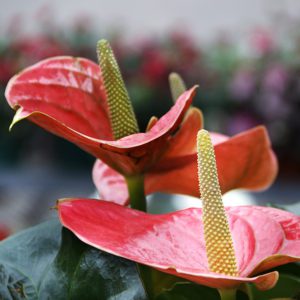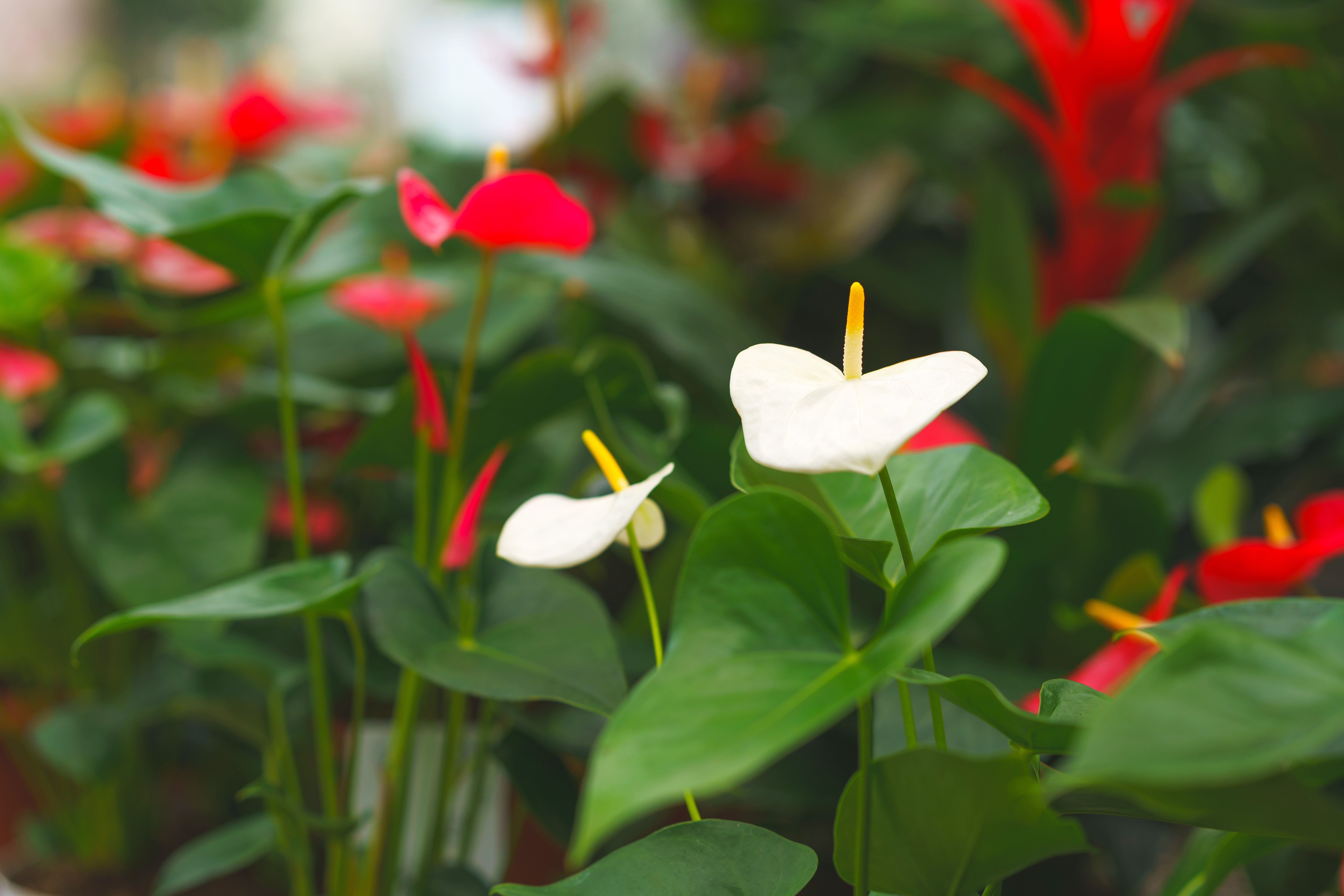August 25, 2025
Anthuriums: Bold Color and Tropical Flair for Your Home
Few houseplants make as striking a statement as the Anthurium. With their glossy, heart-shaped leaves and long-lasting, vibrant blooms, they bring a touch of the tropics to any space. Often called “flamingo flowers” or “laceleaf,” Anthuriums are prized for their unusual, waxy bracts (the colorful “flowers” you see) that surround a slender spike of tiny blooms.
A World of Anthuriums
The genus Anthurium is large—over 1,000 species—but most houseplant varieties fall into a few popular categories:
- Flowering Anthuriums – These are the most common, with colorful bracts in red, pink, white, purple, or even green. Anthurium andreanum and Anthurium scherzerianum are classic examples.
- Foliage Anthuriums – Grown for their dramatic leaves rather than flowers. Species like Anthurium clarinervium and Anthurium crystallinum have velvety leaves with bold, white veining.
- Miniature Anthuriums – Compact and perfect for smaller spaces, these offer the same beauty in a scaled-down size.
 Growing Tips for Happy Anthuriums
Growing Tips for Happy Anthuriums
Anthuriums are tropical plants at heart, so they thrive when you recreate their warm, humid rainforest environment:
- Light – Bright, indirect light is ideal. Too little light can mean fewer flowers; too much direct sun can scorch the leaves. (No idea what bright, indirect light is? Check out our blog on lighting here!)
- Watering – Keep the soil evenly moist but not soggy. Anthuriums dislike drying out completely but also resent sitting in water.
- Humidity – Higher humidity helps them thrive. Consider grouping plants together, placing them on a pebble tray, or using a humidifier.
- Temperature – They prefer temperatures between 65–80°F and are sensitive to cold drafts.
Tricks for More Blooms
- Steady light – A consistent spot with good, indirect light keeps them blooming longer.
- Regular feeding – Use a balanced fertilizer at half strength every 6–8 weeks during active growth.
- Pruning spent blooms – Removing faded bracts encourages new flower spikes.
Common Anthurium Issues and How to Fix Them
Even with the best care, Anthuriums sometimes signal their needs through their leaves and blooms:
- Yellowing Leaves – Often caused by overwatering or poor drainage. Let the top inch of soil dry out before watering again, and make sure the pot has drainage holes.
- Brown Leaf Tips – Usually a sign of low humidity. Increase humidity around the plant or mist occasionally.
- No Flowers – Low light is the most common culprit. Move your plant to a brighter spot with indirect light and feed regularly during the growing season.
- Pale or Faded Blooms – Can be caused by insufficient nutrients—try a diluted fertilizer to help restore vibrancy.
Anthuriums All Year Round
One of the best things about Anthuriums is that their blooms can last for weeks, sometimes months, and they often produce flowers year-round with the right care. They’re also excellent as a living gift plant—colorful, elegant, and long-lasting.
If you’d like more detailed instructions on watering, repotting, and general upkeep, check out our Anthurium Care Guide for step-by-step tips, or stop by and speak to our tropical experts in the greenhouse!

